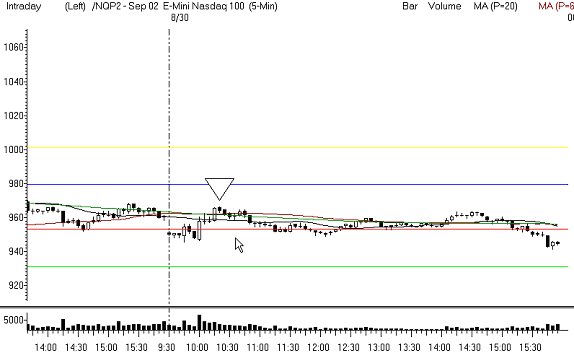Hard Right Edge Allen Zuckerman Exit Strategies
Post on: 19 Июль, 2015 No Comment

Many people speak and teach how and when to enter a trade, but few explain the art of the exit. This is an area that I set out to focus on for some time, and in doing so, was able to come up with several strategies to exit a trade that also fit my risk/reward profile as well as, were able to take advantage of intra-day trend moves.
To perform consistently when trading intra-day I formulated several exit strategies to fit my overall style of trading. Below I will detail a couple of them in order to convey the importance of having an exit strategy that fits your overall style of trading.
Target As A Function Of Risk
One of the most common exit strategies I employ allows me to look for a target based on the risk taken at time of entry. This strategy allows me to have a target in mind upon entry and takes much of the guesswork out of looking for that all-important exit.
This insures that my risk/reward profile is in place. I will pass on an entry when the expected target looks unattainable. It is my contention that the market sends signals, and when it displays a trade that has unfavorable odds of achieving a target, I will most often skip that trade and move on because the market is telling me wait for a better trade.
This also allows me to look ahead and see where the trade will need to travel to obtain my expectation. Will it need to break another support/resistance level? Where should I expect some wiggle? Are moving averages going to affect this target being reached? These are just a few of the questions I look to answer prior to entry to make sure I am taking only the best trades possible.
Pivoting Out
This exit strategy is one that I employ when looking to ride a move as far as possible. Best used at points of reversal or strong breakout levels, this exit allows me to stay in a trade as long as it is moving positively within my desired timeframe.
A pivot is a short term directional change denoted by the breaking of a prior bars low in an uptrend, or a prior bars high in a downtrend. Using this exit strategy will allow you to ride a specific move as far as momentum allows and is generally better on timeframes of 15 or 30 minutes intra-day.
Pivoting out also takes the guesswork out of exiting, as you are simply looking for the short-term directional change to occur to promote the exiting of a position. For example if short off of a major resistance level I will often wait for the 15-minute chart to show a pivot prior to exiting the position. This allows for me to ride the gain to maximum level for my trading style. Generally the rule to use is to look one timeframe lower than entry. If I took a trade off of a 30-minute chart I will then use a pivot on the 15-minute for exit. Many traders don’t switch timeframes while in a trade but I find that it offers a much clearer picture for intra-day trading.
Below is an example of pivoting out. First the entry, taken below Inside Range Bar.
Now below is the exit using the pivot out approach on the 30-minute chart based on entry taken from the above 60-minute chart.
In the above examples you can see from first chart, entry is taken when the inside range bar is broken to the downside. Then, using the pivot out approach, one would exit when the first pivot occurs on the 30-minute chart.
Exiting Into Expansion
Exiting into expansion is a way to exit when things are going in your favor in a dramatic fashion. This is the method of choice generally late in a short-term trend when things are likely to blow off . This exit works best in late trend breakouts from contraction. In other words, when price contracts and then breaks out of the contracted range, slow movement occurs at first, this often turns into a euphoric move that is best exited into, as opposed to being held for further development.
When exiting a trade into an expansion move there are a few things to look for. First, look for an expansion bar that will generally be more than twice as wide as any of the preceding bars in the most recent sequence. Second, look for a sudden increase in volume. Third, begin to look ahead for possible support/resistance level that the bar may expand into. Having a target in mind will often aid in your decision on where to exit.
Exit can be taken in two places using this method. First target for exit is the targeted support/resistance zone that is to be looked for once the range begins to expand. The second area for exit is upon completion of the bar. For example a 30-minute expansion bar closes on the 1/2 hour. Using one of these two areas for exit using the expansion approach will often allow you to exit a trade at an extreme top or bottom.
Below is an example of an expansion bar exit. Entry is taken once range is cleared, then exit is taken into wide range bar.
The three exit strategies outlined above are the three ways I will generally look exit a position. These are all meant for intra-day trading but also offer some techniques that can be used on much wider timeframes.
Allen Zuckerman has traded stocks, options and commodities since 1990. He is now a full-time trader sharing his methods and money management skills with the members of RealityTrader.com Index Trading Chat Room. Allen currently applies various chart patterns and market probabilities to the art of trading the ETF’s and futures markets.














